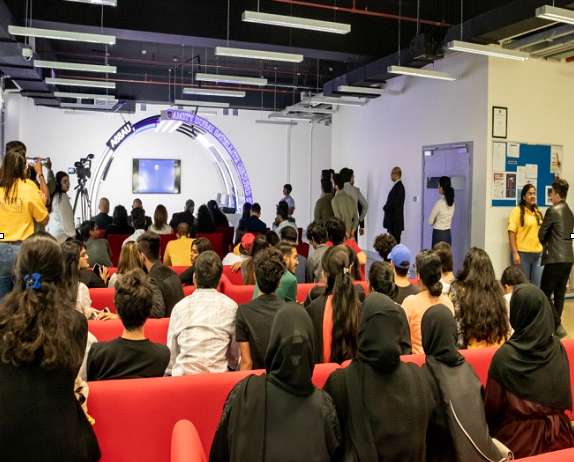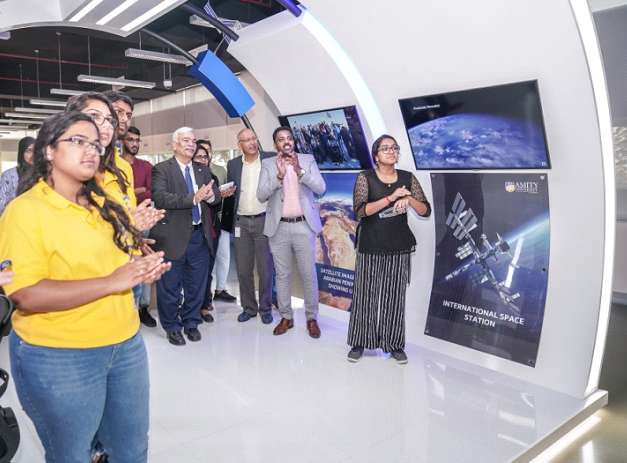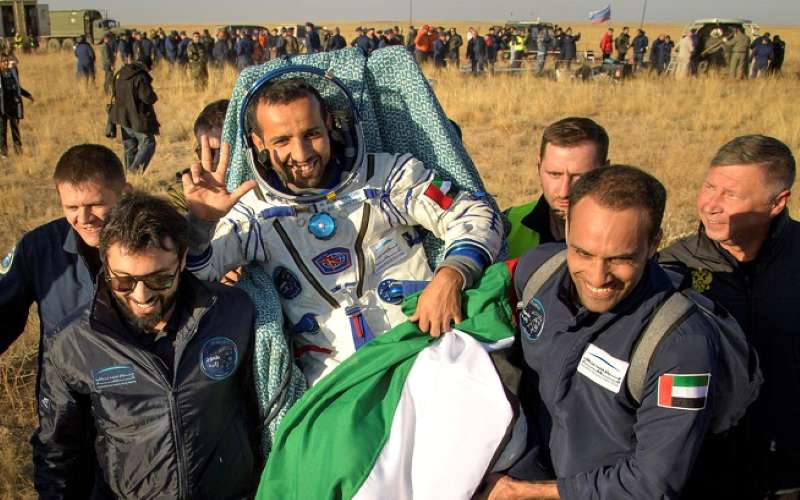By Mohammed Siddiq M., Abu Dhabi, UAE
After a stay of 8 days in space and completing 128 orbits around the earth, and covering a total of 4.9 million kilometers in space, the Emirati astronaut, Hazza Al Mansouri, along with two other crew members, Aleksey Ovchinin, and Nick Hague, have successfully accomplished their mission in space and have returned back to earth via the Soyuz-12 Spacecraft.
Live coverage
A few minutes before the landing, excitement rapidly built up at the Mohammed Bin Rashid Space Centre (MBRSC), Dubai, where students constantly recorded the landing process while their eyes were glued to the screens. A live coverage of the entire landing process was screened at various institutes including Amity University Dubai in their Aerospace Lab, where the students and teachers watching the descent were joined by the Pro Vice Chancellor of the university, Dr. Narayanan Ramachandran. The hall roared with applause and standing ovations as the spacecraft successfully touched down.


The undocking process from the ISS began on time at 11.36 a.m., UAE standard time, over South East Mongolia. The process took between 3 to 4 minutes in which the springs on both the sides of the station gently pushed the spacecraft for it to physically separate itself from the station at a speed of 0.1 meters per second. However, no thrusters were used during the process in order to prevent the docking port from contamination.
Landing process
The landing process continued perfectly as scheduled. At 2.06 p.m., the ‘De orbit burn’ had begun. The ‘De orbit burn’ is a process in which the main engine fires up for about 4 minutes and 42 seconds in order to slow down the spacecraft to about 128 meters per second so that its trajectory can be changed as it enters the earth’s atmosphere.
At 2.47 p.m., parachutes had been deployed in order to slow down and reduce the impact at the point of contact with the ground. At this point in time, the Emirati astronaut was 13 minutes away from a historic return. However, according to the, European Space Agency (ESA), the dense layers of the atmosphere “act as natural breaks” for the spacecraft as it enters the earth’s atmosphere before the parachutes are deployed.
At 2.59 p.m., just 70 centimeters above the ground, six rockets at the bottom of the Descent Module fired up in order to minimize the impact of the touch down to a speed of 5 kilometers per hour. At 3.00 p.m., as it was scheduled, the module landed at Zhezqazghan, Kazakhstan, and marked the historic return of the Emirati astronaut.
After the Russian helicopters surveyed the landing site, “It appears to be a bull’s eye touchdown”, said NASA.
“Welcome back Hazza Al Mansouri after your journey as the first Arab Astronaut to the International Space Station. We are proud of your achievement and the knowledge and expertise we have gained through your trip. We have broadened the horizons of our future generations in space.”, said H.H. Sheikh Mohammed Bin Rashid Al Makhtoum on the arrival of Hazza.
The crew members had gone through a few medical procedures upon landing and were said to be in excellent health condition. Shortly after that, the crew was taken to the Karaganda Airport with the help of a helicopter where Hazza and Ovchinin had a press conference before departing to Moscow. Over there, Hazza accompanied by the UAE Astronaut Team from the MBRSC will undergo post medical checkups until mid October.

